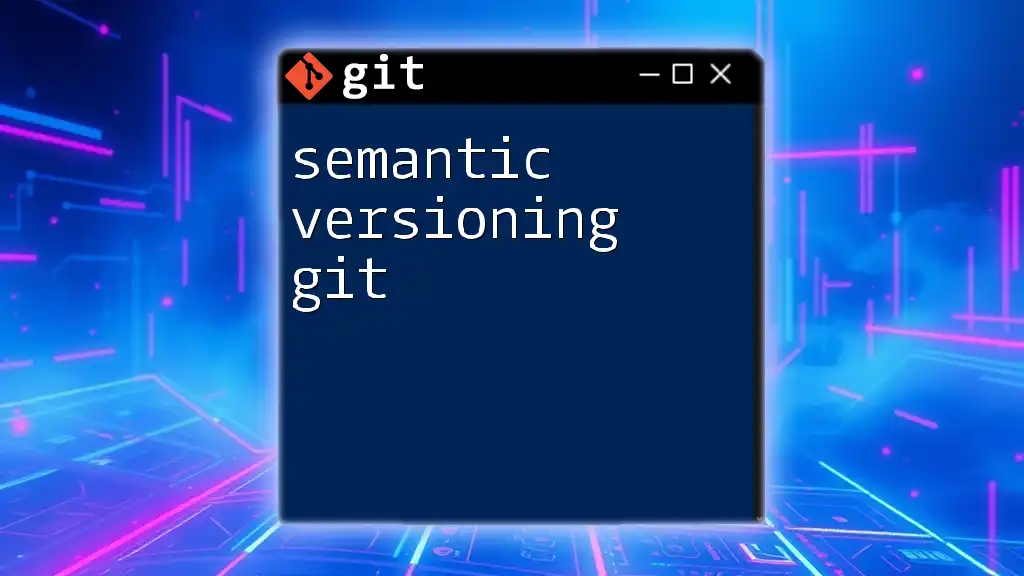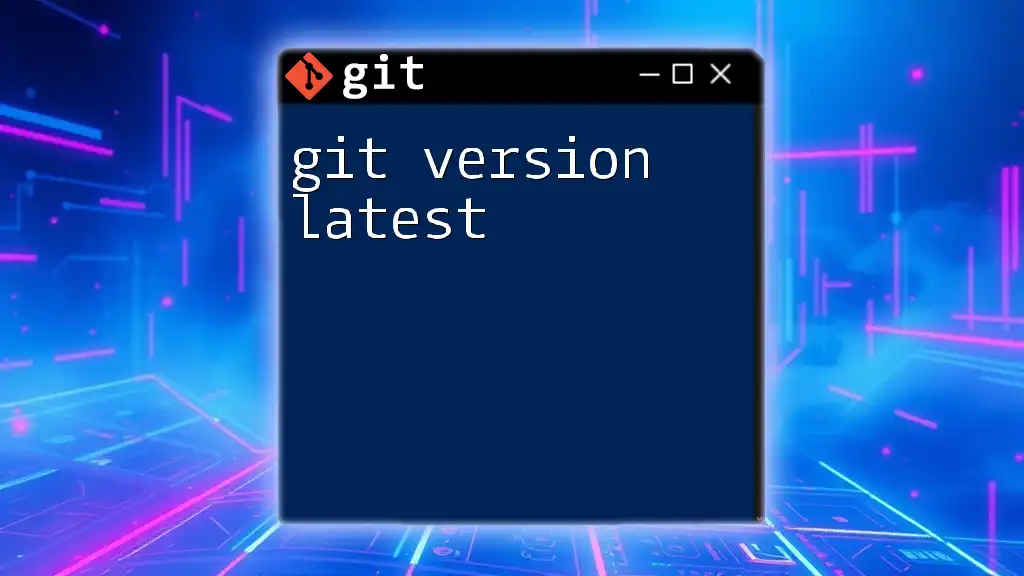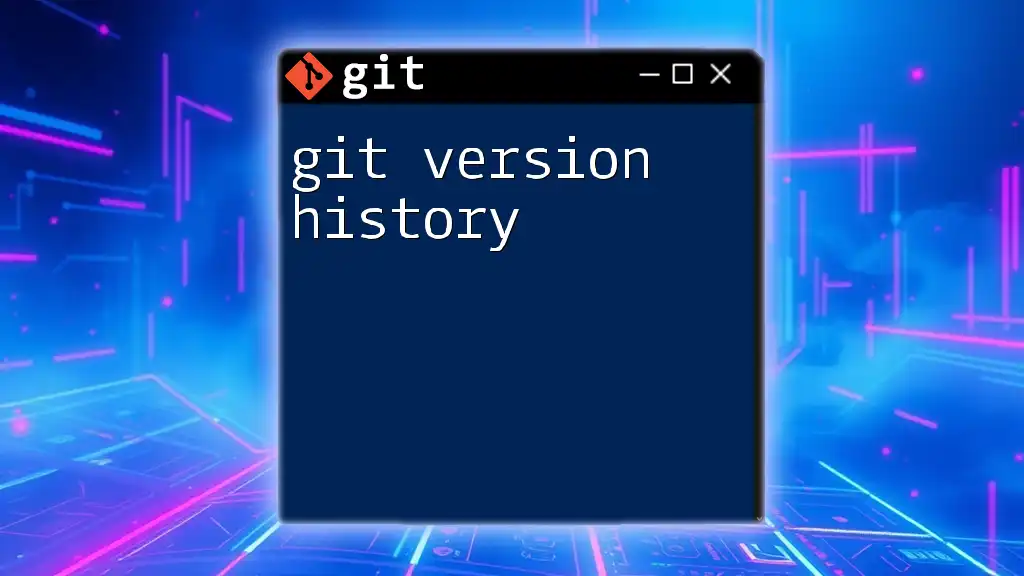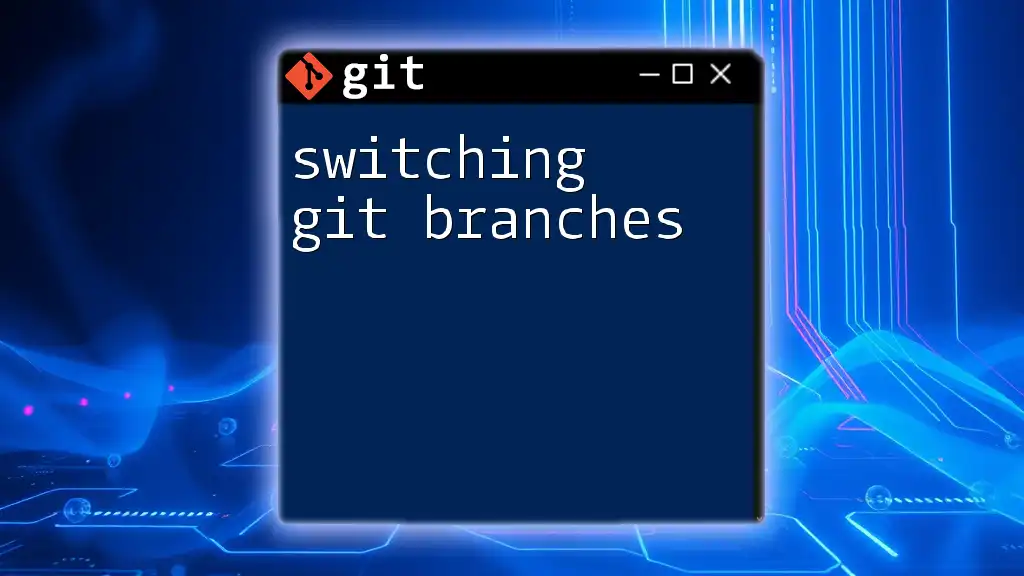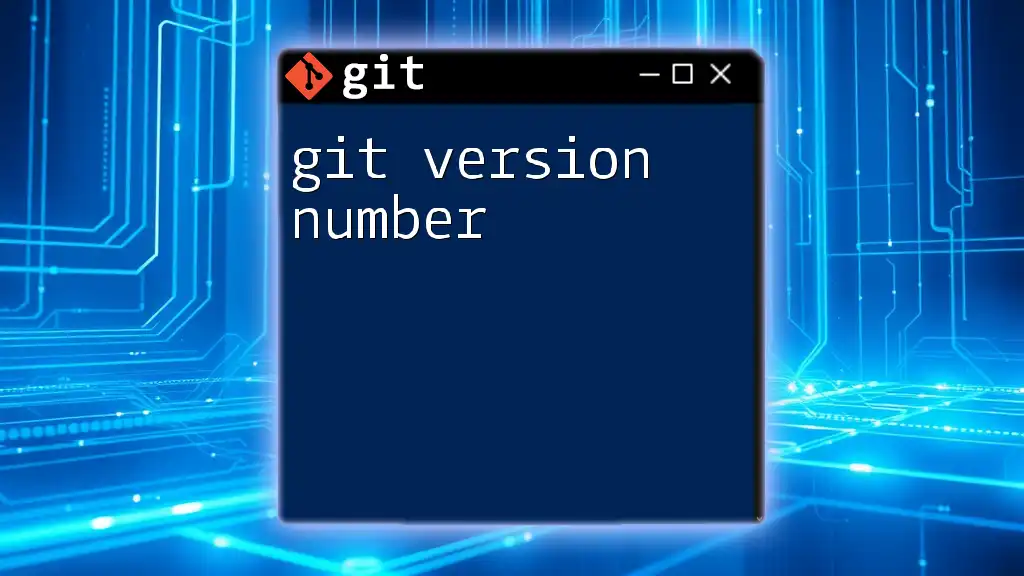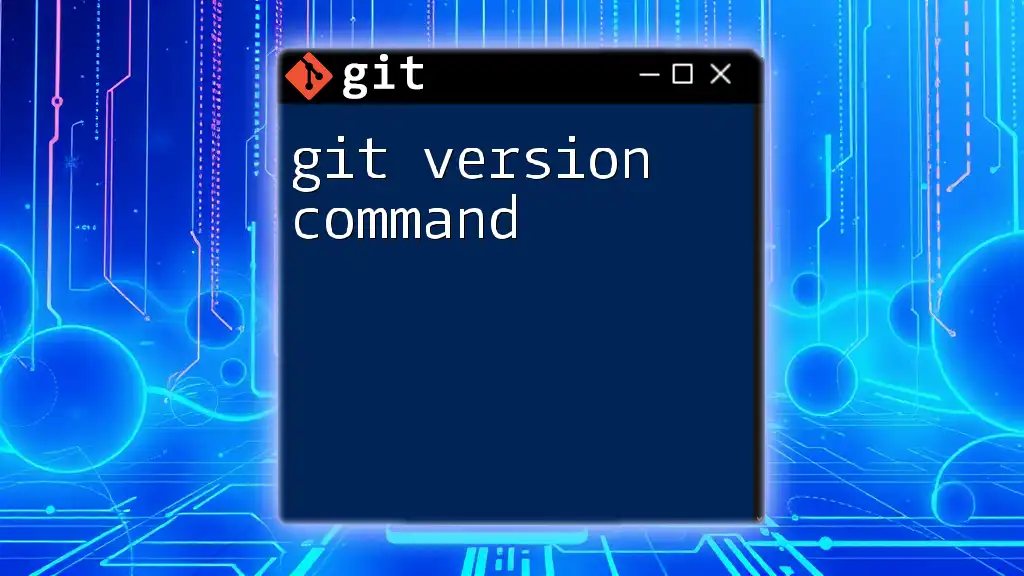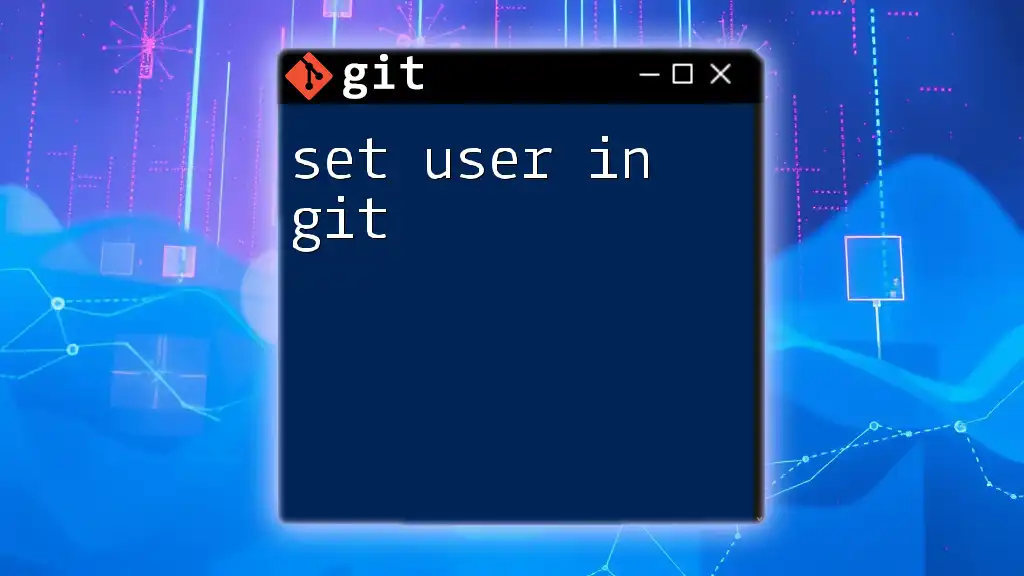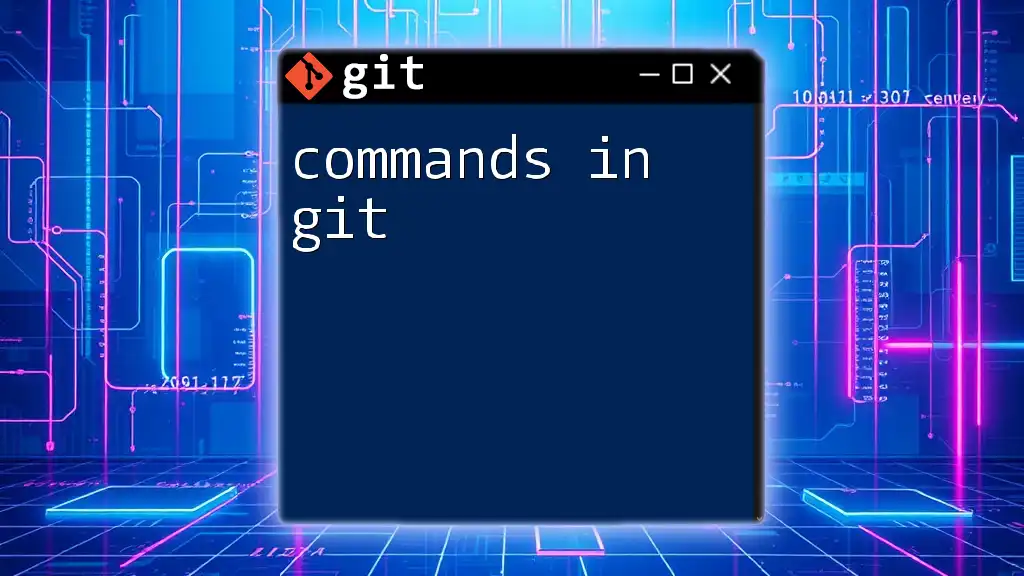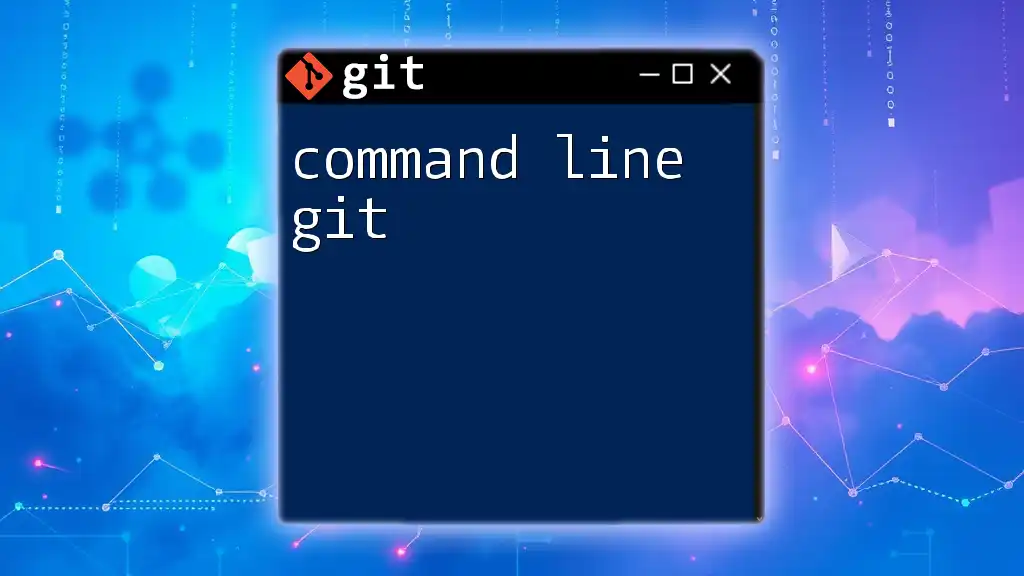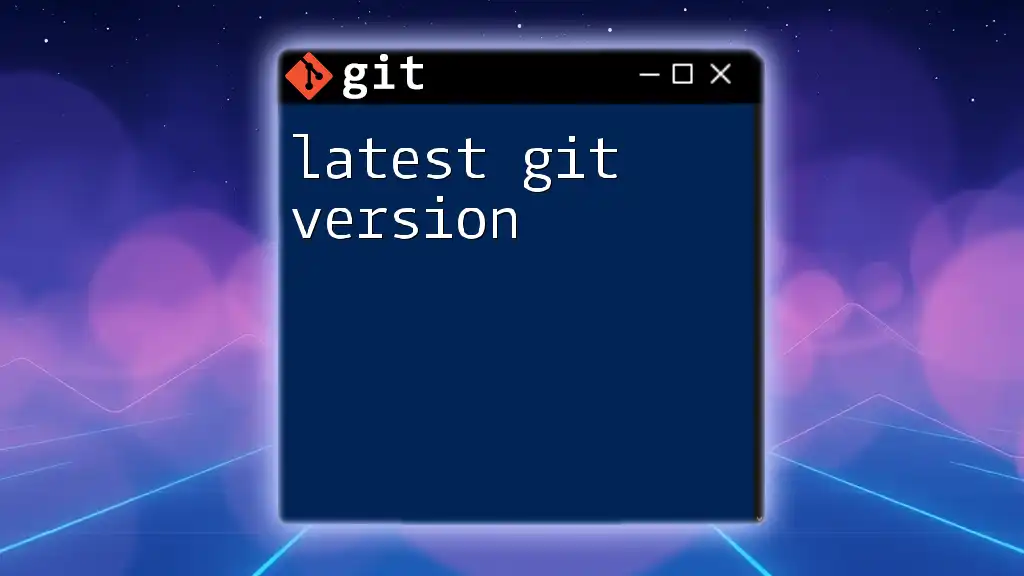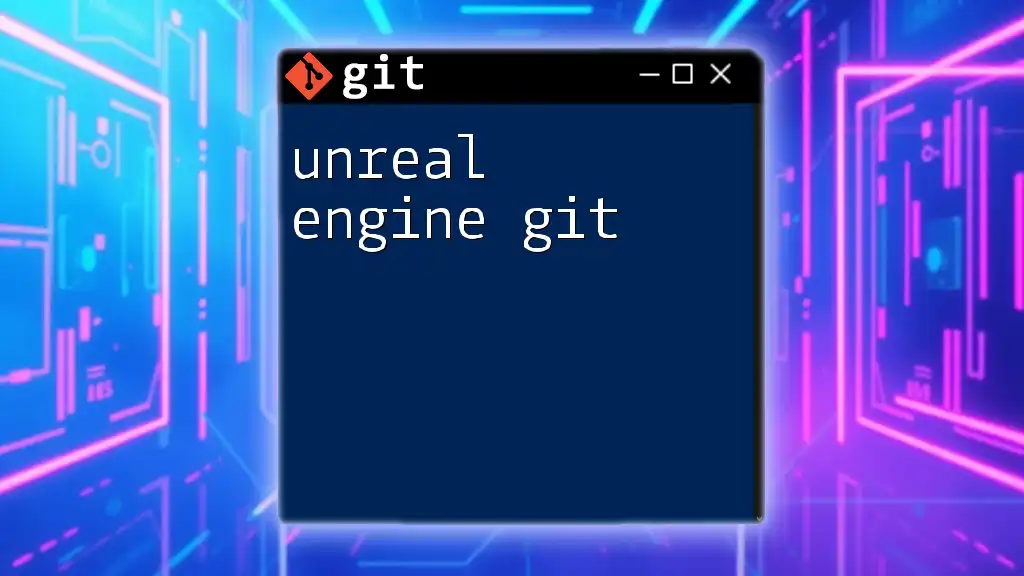Semantic versioning in Git is a versioning convention that helps you manage releases by labeling them with a version number consisting of three parts: Major, Minor, and Patch, which you can increment according to the nature of your changes.
Here’s a basic example of how to tag a release in Git using semantic versioning:
git tag -a v1.0.0 -m "Initial release"
Understanding Semantic Versioning
Semantic Versioning Basics
Semantic Versioning (often abbreviated as "SemVer") is a versioning system that helps developers manage version numbers in a consistent way. Semantic Versioning follows a specific format: `MAJOR.MINOR.PATCH`. Each section of the version number has a specific meaning:
-
MAJOR: This number is incremented when there are incompatible changes that break backward compatibility. For example, changing a function's parameters or removing an existing feature would warrant a major version bump.
-
MINOR: This number increases when new features are added in a backward-compatible manner. If you add significant new functionality that doesn’t break existing implementations, you should increment the minor version.
-
PATCH: This number is updated for backward-compatible bug fixes. If you resolve a bug that doesn’t change the functionality of the application, you should increase this number.
When to Increment Each Segment
Understanding when to adjust your version numbers is crucial for effective semantic versioning:
-
If you are moving from version `1.0.0` to `2.0.0`, this implies that you have made breaking changes.
-
Changing from `1.0.0` to `1.1.0` indicates that you’ve added new features in a backward-compatible way.
-
Incrementing from `1.0.0` to `1.0.1` shows that you've made a bug fix.
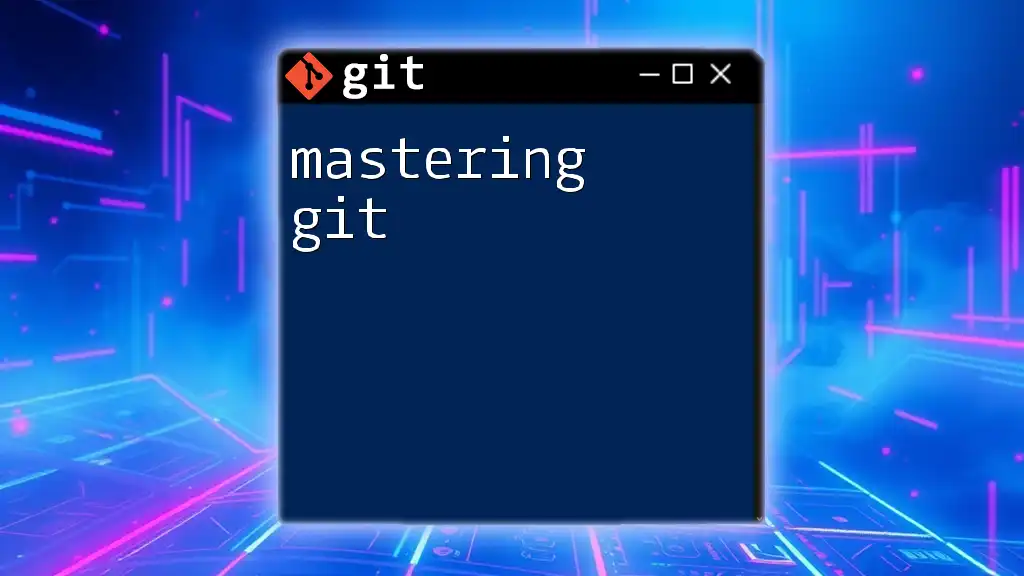
Setting Up Semantic Versioning in Your Git Workflow
Choosing a Versioning Schema
Before implementing semantic versioning in your Git workflow, it’s essential to establish a clear versioning schema. This clarity ensures everyone on your team understands how versioning works, promoting consistency and reducing confusion.
Initial Setup - Starting Your Repository
To begin, create a new Git repository to house your project. This works as your version control foundation.
git init my-project
cd my-project
Creating Your First Version Tag
Once you have your project underway, it’s time to create your first version tag. Tags in Git act as references to a specific point in your repository’s history, typically indicating a release point.
To create your initial version tag, use the following command:
git tag -a v0.1.0 -m "Initial release"
This directive generates a new tag annotated with the message "Initial release," and this becomes your starting point for semantic versioning.
Best Practices for Version Naming
When utilizing Git tags, establish a recommended naming convention for tags. This can simply be the version number prefixed with "v" (e.g., `v1.0.0`, `v1.0.1`). Consistent tag names help in maintaining clarity on the releases over time.
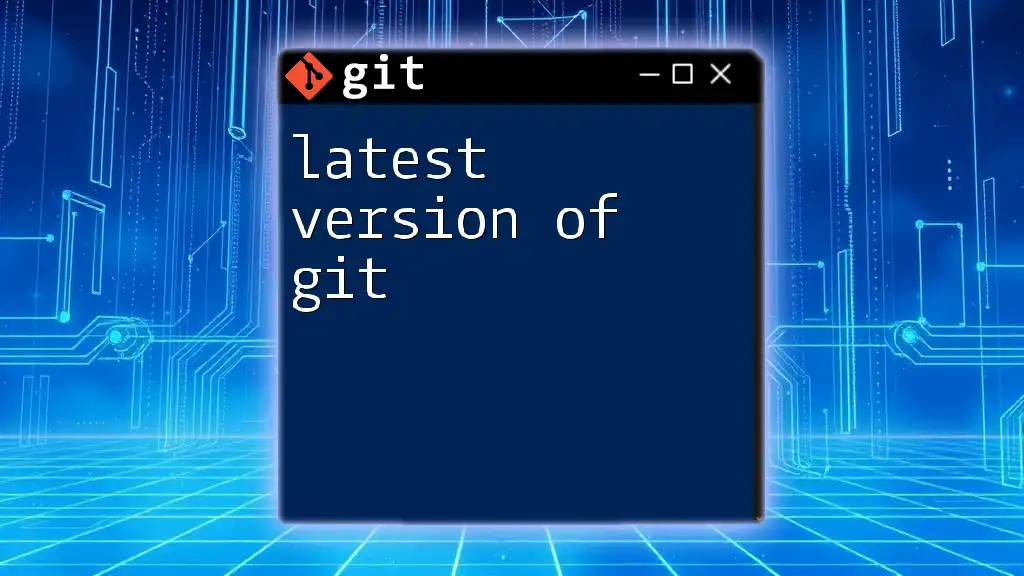
Handling Versions in Your Git Workflow
Branching Strategies for Version Control
Incorporating a structured branching strategy is vital for effective Git workflow management. Various models exist, but here are some common practices:
-
Feature Branches: These are created for new features. Once the feature is complete, branches are merged back into the main codebase.
-
Development and Master Branches: The development branch serves as the working branch where all feature branches can be merged and refined. The master branch houses the production-ready code.
git checkout -b feature/add-login
This command creates a new branch for developing a feature, keeping your main working branch clean.
Using Git Tags for Releases
Git tags play an essential role in versioning, particularly for releases. Properly managing tags allows you to trace back to specific points in your version history easily.
You can list all tags in your repository with the command:
git tag
If you ever need to delete a tag locally, use:
git tag -d v0.1.0
Automating Versioning with Scripts
Effort can be saved by writing scripts that help in the automation of version management. A simple Bash script can be created to increment versions automatically based on your defined strategy.
For example, a script to fetch the current version might look something like this:
#!/bin/bash
current_version=$(git describe --tags `git rev-list --tags --max-count=1`)
echo "Current version is $current_version"
This script retrieves and displays the most recent version tag, streamlining your version management process.
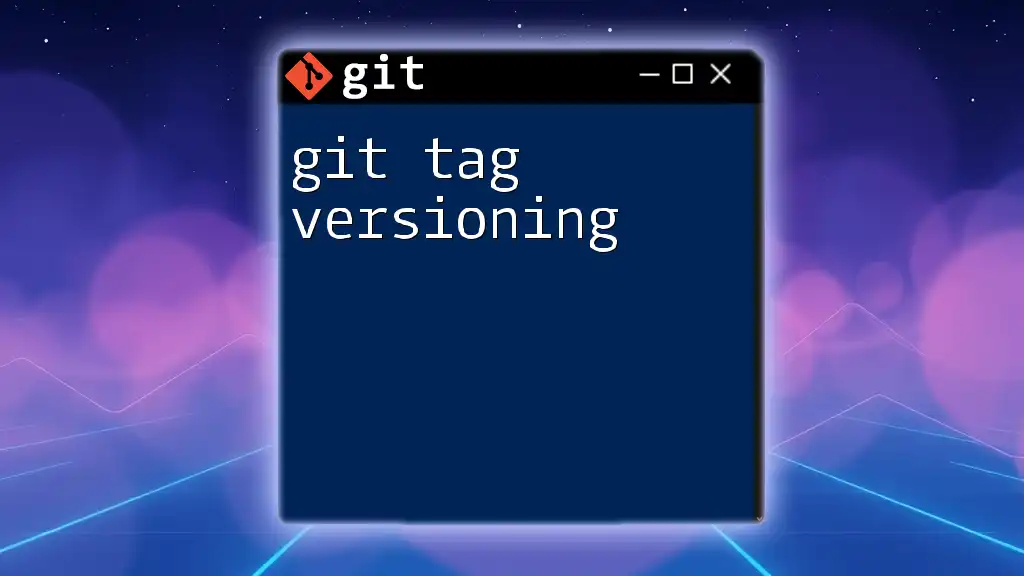
Best Practices for Implementing Semantic Versioning
Communicating Changes to Your Team
Proper communication concerning changes to version numbers is paramount. Developing a clear CHANGELOG.md is a best practice that documents all changes for each version. This log aids your team and end-users in understanding what changes were made and why.
Versioning and Continuous Integration
Incorporating semantic versioning into your CI/CD pipelines can enhance efficiency. By automating version bumps during your build processes, you bridge the gap between development and production. Tools such as GitHub Actions allow you to automate workflows effectively:
# Example GitHub Action snippet
name: Release
on:
push:
tags:
- 'v*'
jobs:
build:
runs-on: ubuntu-latest
steps:
- name: Checkout code
uses: actions/checkout@v2
- name: Run Tests
run: ./run-tests.sh
This snippet demonstrates how to trigger builds based on tag pushes.
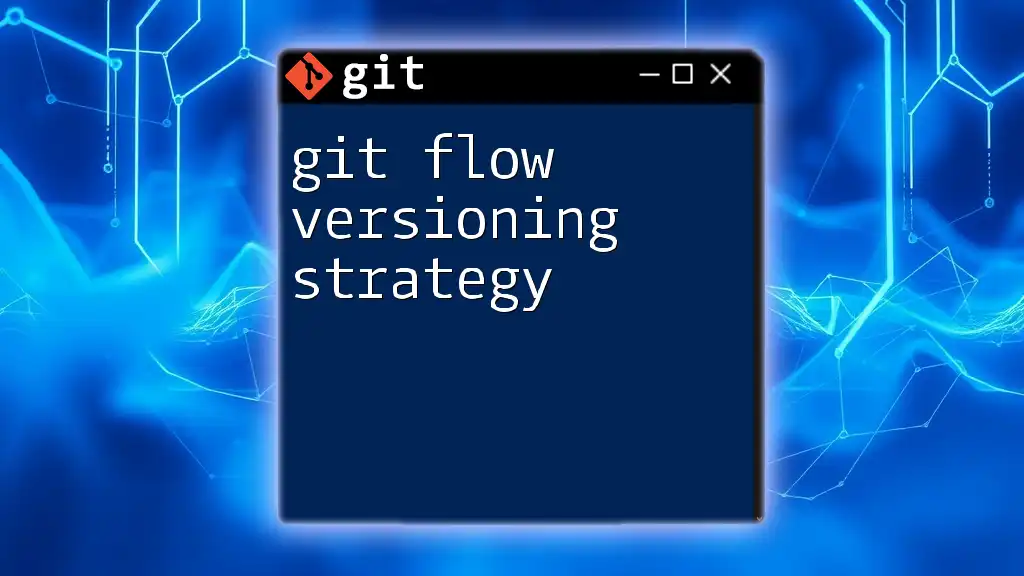
Common Challenges and Solutions
Managing Dependencies with Versioning
Another important aspect of semantic versioning in Git is how it influences dependency management. Utilizing the versioning system ensures compatibility within libraries and APIs your project relies upon. Be proactive about managing updates to dependencies, ensuring backward compatibility.
Handling Breaking Changes
When breaking changes occur, it’s crucial to communicate these effectively. Establish guidelines for documenting these changes in your CHANGELOG. Clearly state version increments, the scope of changes, and their impact on the user experience, providing transparency to your users.
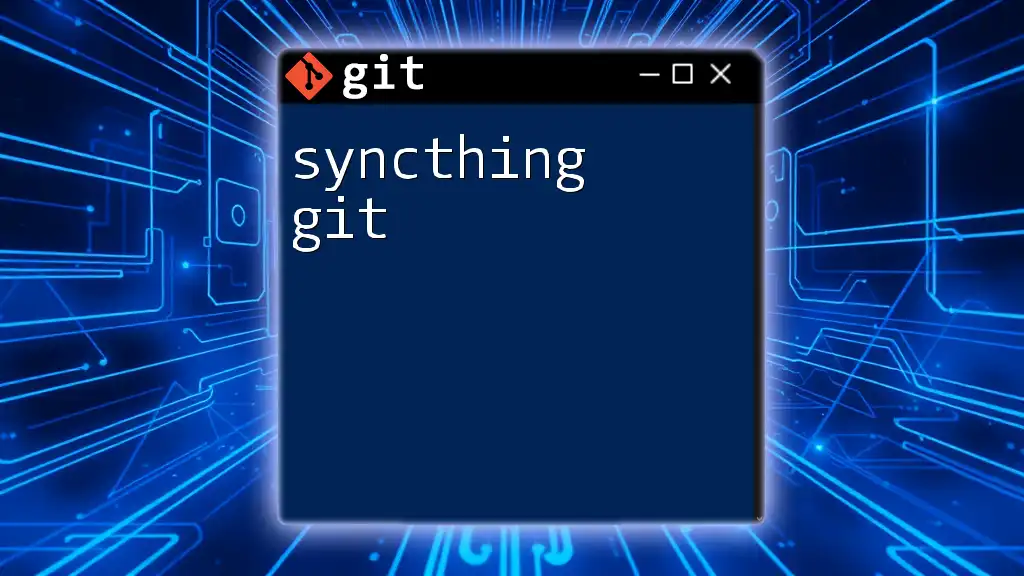
Conclusion
Adopting semantic versioning in Git promotes better project structure, clearer communication, and simplified workflow processes. By understanding the key components of version increments and establishing best practices, you equip yourself and your team with the knowledge necessary for smooth project management.
Embrace semantic versioning to ensure your development efforts are both efficient and well-organized. By doing so, you invite clarity and transparency into your project – leading to smoother collaborations and a more robust software product.
Call to Action
To dive deeper into Git commands and version management, consider signing up for more resources or tutorials that can enhance your development skills further.

